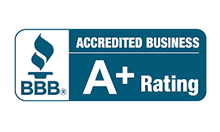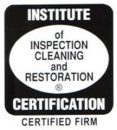Water damage is one of the most challenging issues a homeowner can face. Whether from a natural disaster, faulty plumbing, or appliance malfunction, water damage can wreak havoc on your property and belongings. One of the most pressing concerns is whether the damage is permanent or can be repaired.
In this section, we’ll explore the concept of permanent water damage and discuss the key signs you should look for when assessing the extent of water damage in your home. Knowing these signs can help you make informed decisions to minimize further damage and save you from costly repairs.
Key Takeaways
- Water damage can cause permanent damage if not addressed promptly.
- Visible signs of structural damage, mold growth, and discoloration can indicate the permanence of water damage.
- Electrical and appliance damage, as well as weakened structural integrity, can pose safety risks and indicate permanent water damage.
- Addressing the issue promptly can help minimize the risk of permanent damage and save you from costly repairs.
Understanding the Impact of Water Damage
Water damage can have a variety of consequences and effects on the materials and structures in your home. Understanding the impact of water damage is crucial because it can help you determine the likelihood of permanent damage. Some of the effects of water damage include:
- Discoloration: Water stains on walls, ceilings, and floors may indicate the presence of water damage. Discoloration can also occur as a result of mold and mildew growth.
- Warping and buckling: Excessive moisture can cause wood flooring to warp or buckle, and drywall to bow or sag. These are signs of long-term water damage.
- Compromised structural integrity: Water damage can weaken the structural integrity of your home. Cracks in walls or foundation, or uneven floors may be symptoms of structural damage.
- Electrical issues: Water can damage electrical systems and appliances, posing risks to both your home and your family’s safety.
- Mold and mildew: Water damage creates an ideal environment for mold and mildew growth. The presence of mold and mildew may indicate long-standing water damage and can cause health problems if left untreated.
It’s important to note that these effects of water damage are not exhaustive and that the severity of damage can vary greatly depending on the specific circumstances. Our table below provides some examples of how different materials can be affected by water damage.
Recognizing the potential effects of water damage is crucial for assessing the permanence of the damage and deciding on appropriate repair and remediation measures.
Materials Affected by Water Damage:
| Material | Potential Effects of Water Damage |
|---|---|
| Wood | Warping, splitting, decay, mold, and mildew growth |
| Drywall | Bow or sag, disintegrate, stain, and promote mold growth |
| Carpet and Upholstery | Discolor, stain, and cause mold and mildew growth |
| Concrete and Masonry | Cracking, staining, and flaking |
| Electronics and Appliances | Short circuits, corrosion, and functional failure |
Visible Signs of Structural Damage
Water damage can compromise the structural integrity of your home, leading to permanent damage if not addressed promptly. One of the most apparent indications of structural water damage is visible signs on surfaces, including walls, floors, and ceilings. These signs can include:
- Cracks or gaps in surfaces
- Bulging or warping of walls, floors, or ceilings
- Decay or rotting of materials
- Bowing or sagging of ceilings or rooflines
If left unattended, these visible signs can worsen over time and become irreversible, ultimately leading to hazardous conditions and weakening the foundation of your home.
It is essential to act quickly and address any visible signs of water damage before they escalate into more significant issues.
Mold and Mildew Growth
When dealing with water damage, mold and mildew are commonly found in affected areas. They thrive in moist environments and can spread quickly throughout a home, causing a variety of health issues and deteriorating the condition of materials within the home.
The presence of mold and mildew can provide critical insight into the severity of the water damage and the potential for irreparable harm.
There are different types of mold that can grow in water-damaged areas, such as black mold, which is particularly harmful to human health. It’s essential to take any mold growth seriously and address it immediately.
| Mold Growth | Potential Consequences |
|---|---|
| Patchy discoloration on surfaces | Can lead to respiratory issues and allergies |
| Musty or unpleasant odor | Can reduce the air quality in your home and cause respiratory issues |
| Crawling or slimy texture | Can indicate an advanced stage of mold growth |
The table illustrates the common types of mold growth and their potential consequences.
It’s important to address any mold growth in water-damaged areas immediately to prevent it from spreading further and causing permanent damage to your home and health.
Electrical and Appliance Damage
When water damage occurs, electrical systems and appliances are at risk for damage and malfunction. Water can cause electrical shorts and fires, posing a serious threat to your home and safety. Even if your electrical system appears to be functioning normally, it is crucial to have it inspected by a professional after water damage.
In addition to the risks to your electrical system, water damage can also damage household appliances such as refrigerators and washing machines. Even if the appliance appears to be working, water damage can cause hidden issues that can lead to expensive repairs or the need for replacement.
Damaged appliances can also be a sign of the permanence of water damage. If multiple appliances are damaged or malfunctioning after water damage, it may indicate that the damage is extensive and more difficult to repair.
Odor and Discoloration
When water damage occurs, an unpleasant musty smell can linger for a long time. This odor is often caused by the growth of mold and mildew in moist areas. If the musty smell persists despite attempts to clean and dry the affected area, it could be an indication of underlying water damage that may have caused permanent structural damage to your home.
Discoloration is another common sign of water damage. Brown, yellow, or dark stains on your walls, ceilings, or floors can be caused by the prolonged exposure of those surfaces to water. In extreme cases, discoloration can indicate the growth of mold and mildew, which can cause respiratory problems and other health issues if left unchecked.
If you notice any musty smells or discoloration in your home, it is crucial to have a professional inspect the area to determine the extent of the damage and the risk of permanent structural damage.
Structural Integrity and Safety Concerns
Water damage is a serious issue that can damage the structural integrity of your home. When water penetrates the building’s materials, it can cause them to expand or contract, leading to cracks and other visible signs of damage. Once the structural integrity is compromised, the risk of collapses or other safety hazards significantly increases.
If left untreated, water damage can cause long-lasting damage to your home, making it unsafe for you and your family. The weakened structure is particularly dangerous during natural events, such as earthquakes or hurricanes which can cause structural failures even in relatively small tremors or winds.
In addition to the structural safety concerns, water damage can also pose a health risk to the occupants. Areas affected by water damage can become breeding grounds for mold and mildew, putting you and your family at risk of respiratory infections, skin irritation, and other health problems.
To minimize the risk of compromised structural integrity and safety hazards, it is crucial to address water damage promptly. Early detection and remediation are key to preventing widespread damage and protecting the safety of those in your home.
Conclusion
Water damage can have severe consequences for your home and its occupants. If left unaddressed, it can result in permanent damage to your property and compromise its structural integrity, leading to safety concerns.
By understanding the impact of water damage, recognizing visible signs of structural damage, the presence of mold and mildew, electrical and appliance damage, odors and discoloration, and safety risks, you can identify the severity and potential permanence of the damage to your property.
It’s vital to address water damage promptly with the help of professionals to minimize its effects and the risk of permanent damage. Remember, prevention is always better than cure.
Always keep an eye out for the signs of water damage, act quickly, and contact reliable professionals to help you restore your property to its pre-damage condition.
FAQ
Is water damage permanent?
Water damage can lead to permanent damage if not promptly addressed. Certain factors, such as the duration and extent of the water exposure, can increase the likelihood of permanent damage.
What are the key signs of permanent water damage?
Some key signs to look for when assessing the permanence of water damage include extensive structural cracks, severe warping or decay, persistent mold and mildew growth, and compromised electrical systems or damaged appliances.
What are the consequences of water damage?
Water damage can have a range of consequences, including structural weakening, electrical hazards, mold and mildew growth, musty odors, discoloration, and potential safety risks. Addressing water damage promptly can help mitigate these consequences.
What are the visible signs of structural damage from water?
Visible signs of structural damage from water can include cracks in walls or foundations, warped or sagging ceilings or floors, peeling paint or wallpaper, and observable decay or deterioration of structural materials.
Can mold and mildew growth indicate permanent water damage?
Yes, the presence of mold and mildew in areas affected by water damage can indicate an ongoing moisture problem and potential for permanent damage. Mold and mildew require moisture to thrive and can cause further deterioration if not addressed.
How can water damage affect electrical systems and appliances?
Water damage can pose risks to electrical systems and appliances. It can lead to short circuits, electrical fires, or damage to electrical components. Additionally, water exposure can cause appliances to malfunction or become unsafe to use.
Do musty smells and discoloration indicate permanent water damage?
Musty odors and discoloration, such as yellowing or dark stains, are often indicative of water damage. These sensory indicators can suggest the presence of hidden moisture and potential long-term damage if not properly remediated.
How does water damage impact structural integrity and safety?
Water damage can compromise the structural integrity of a building by weakening materials such as wood or drywall. This can pose safety risks, as weakened structures may collapse or create hazards. Promptly addressing water damage is essential to maintain a safe environment.


















